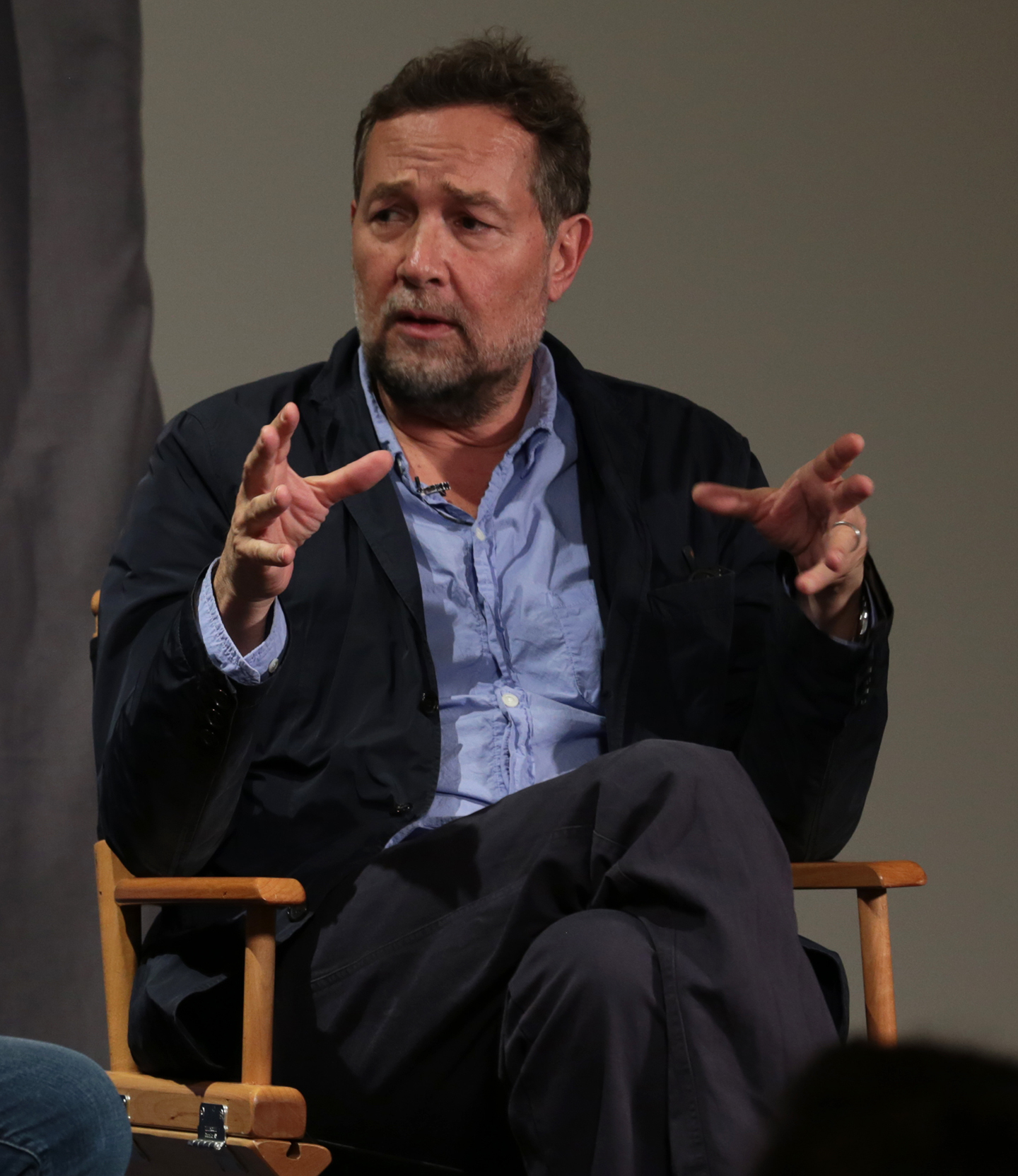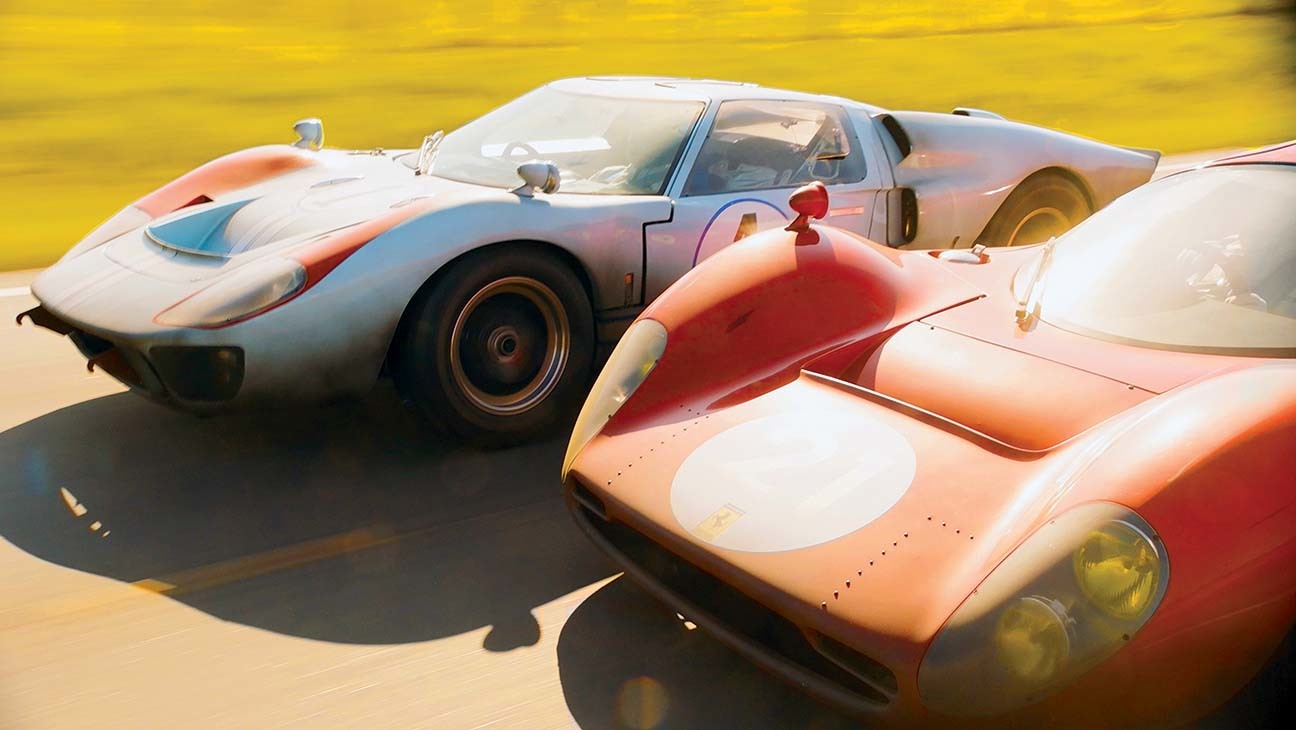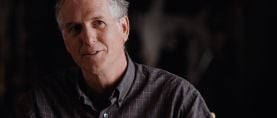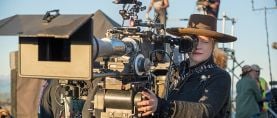
Clubhouse Conversation: Phedon Papamichael, ASC, GSC on Ford v Ferrari
The cinematographer discussed his ongoing collaboration with director James Mangold, as well as the challenges of filming with stunt cars and lighting limitations.

Phedon Papamichael, ASC, GSC paid a visit to the historic ASC Clubhouse in Hollywood this week for a conversation with American Cinematographer contributor Jim Hemphill about his latest collaboration with director James Mangold, the sports drama Ford v Ferrari.
The feature is based on the true story of American car designer Carroll Shelby (Matt Damon) and driver Ken Miles (Christian Bale) as they build a revolutionary race car for Ford Motor Company in an effort to beat the dominating Ferrari race cars at the 1966 24 Hours of Le Mans.
This project marked the fifth collaboration between Papamichael and Mangold — their other features include Identity, Walk the Line, 3:10 to Yuma and Knight and Day. The cinematographer’s other credits include Nebraska, The Monuments Men, The Descendants and Sideways.
Papamichael shared that, as a child in Europe, he grew up watching racing and had an early passion for Jean-Luc Godard films. Because of this, he added, he was able to easily put together a mood board for Ford v Ferrari. The cinematographer also noted that the colors of the cars — which were historically accurate — dictated a lot of the feature’s color palette.
Since Papamichael felt many racing pictures focus primarily on the action and the vehicles, it was important to him to keep the main characters connected to the photography. Therefore, the races, crashes and all other action involving the cars were seen through the protagonists’ point of view.

Papamichael photographed the picture on Arri Alexa LF digital cameras with Panavision anamorphic lenses that were expanded for the large format by ASC associate Dan Sasaki, Panavision’s vice president of optical engineering.
The cinematographer noted that it was essential that the cameras stayed physically close to the cars and that all the stunts were supposed to play off of the camera angles. The crew filmed the cars close to the actual speed they were moving in the film, and all of the action in the feature — the stunts, crashes, etc. — were real. There was only one CG shot of the cars in the entire film, he noted, and that was solely because they needed to digitally recreate the look of the Le Mans racetrack from 1966. Papamichael felt the shot stood out too much from the “real precision driving” of the rest of the picture, so the shot was eventually cut in half. He noted that, while specific action beats were designed with the cars, there was also a lot of improvisation between the stunt drivers and Bale.

Papamichael concluded the discussion by sharing some of the challenges of production. One of the biggest, he said, was that any nighttime filming at Le Mans was very limited. While the production crew was originally offered to shoot until midnight, due to noise complaints regarding the cars, this was changed to 10 p.m. Since production was filming during the late summer, Papamichael added, the sun did not set until after 8 p.m., which gave him very little time to work with the darkness.

He also shared a complication around shooting the night rain sequences during the race. Since the track is so large, they weren’t able to practically produce rain around the entire tack — only a couple of sections. They did, however, heavily wet down the entire track, and Papamichael found that the tire spray from the camera cars onto the stunt cars provided a realistic look of rain that was later enhanced digitally.
A complete production story on this film is now available for AC subscribers. An interview with Mangold is available here.
A multi-part video of this Clubhouse Conversations event will soon be available to Friends of the ASC subscribers.







